Air Bear
Description
Air Bear is a smart air quality monitor for children that notifies parents of harmful air quality, uses AI to nudge positive behavioural changes and prompts climate action. It was designed under the brief "Apply AI" for the 2023/24 RSA Design Awards.
Duration: Oct 2023 - Dec 2023
Role: Solo Designer
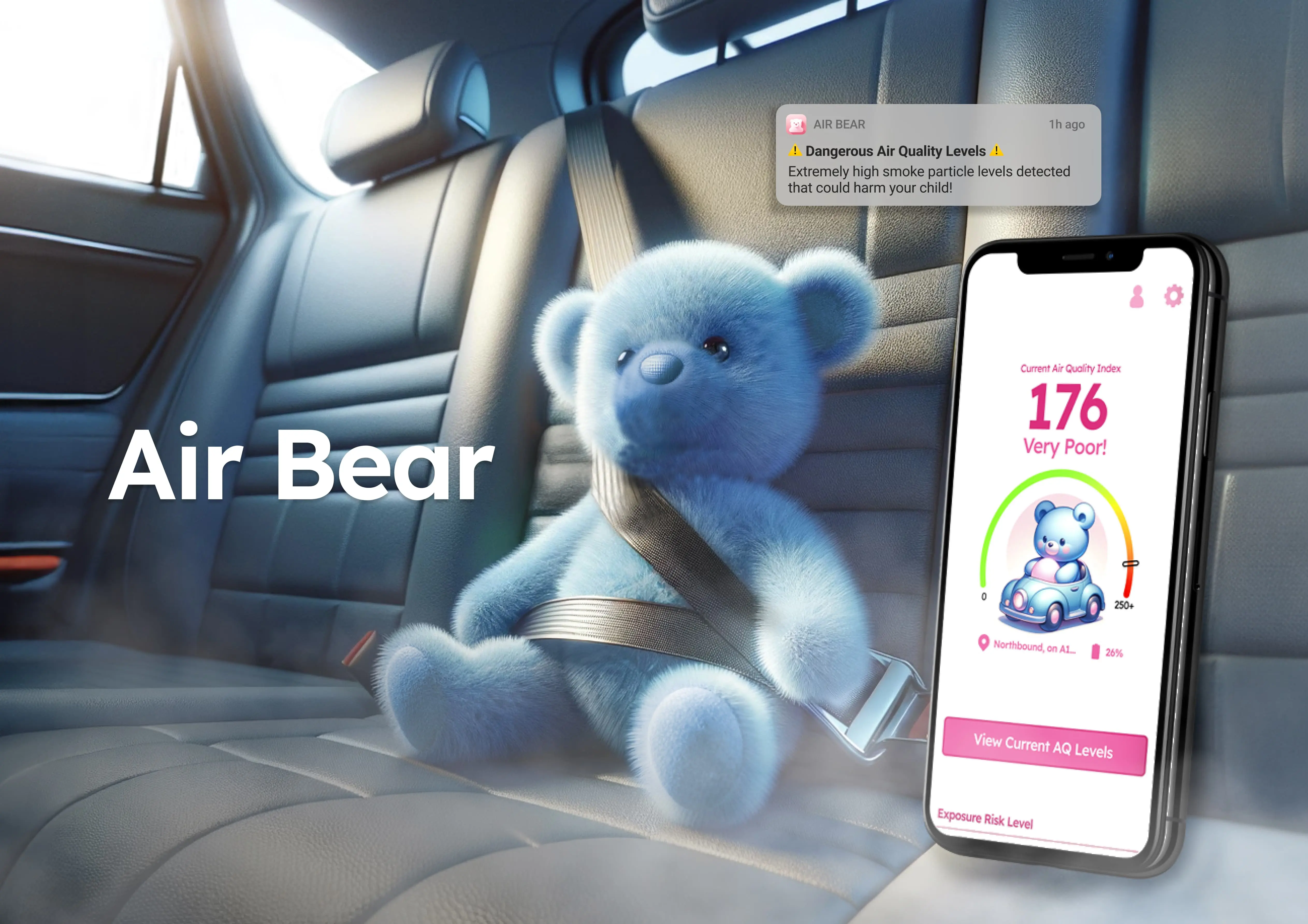
Desk Research Interviews 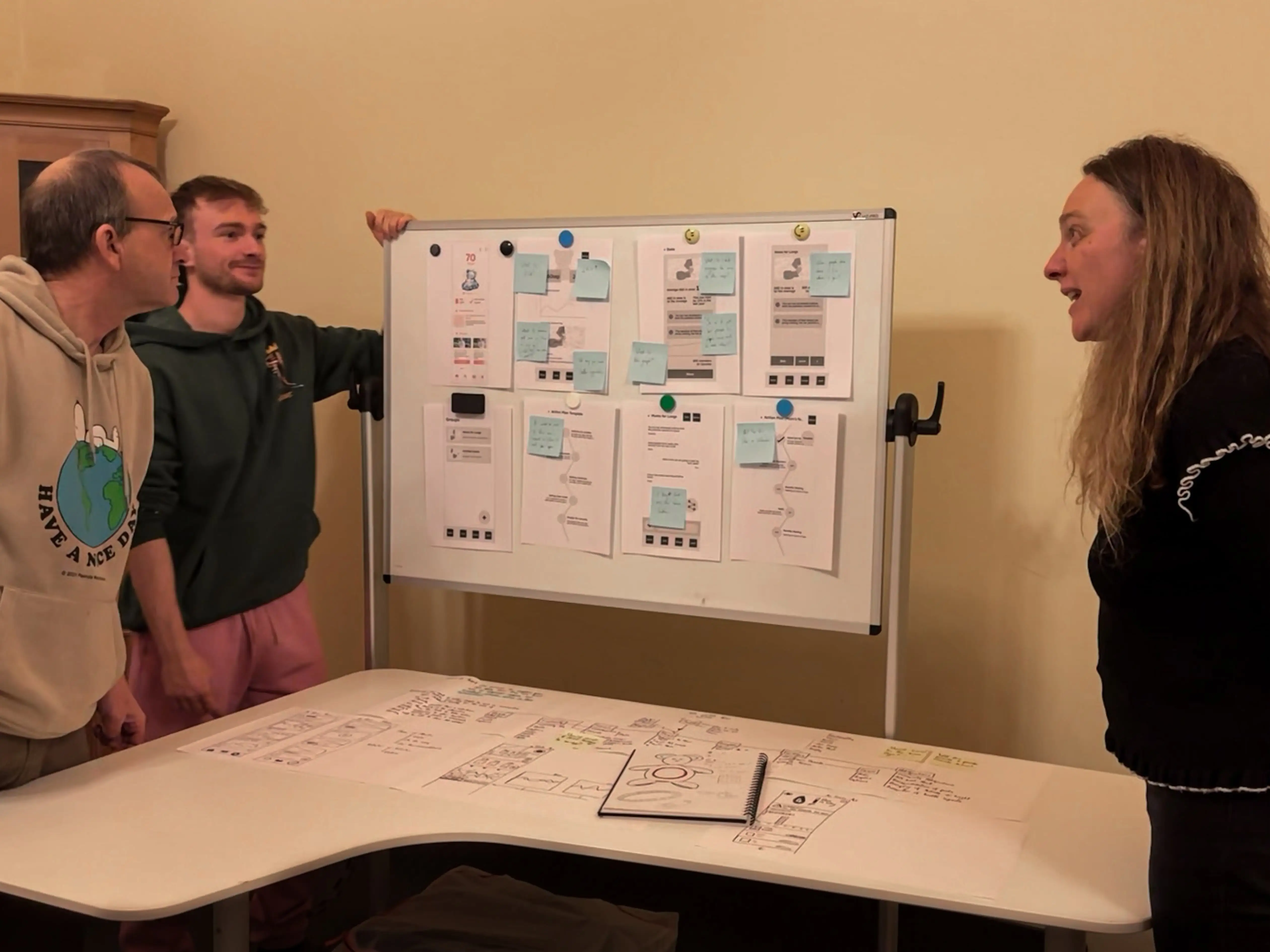
'How Might We' Brain-Storming
Co-Design Sessions 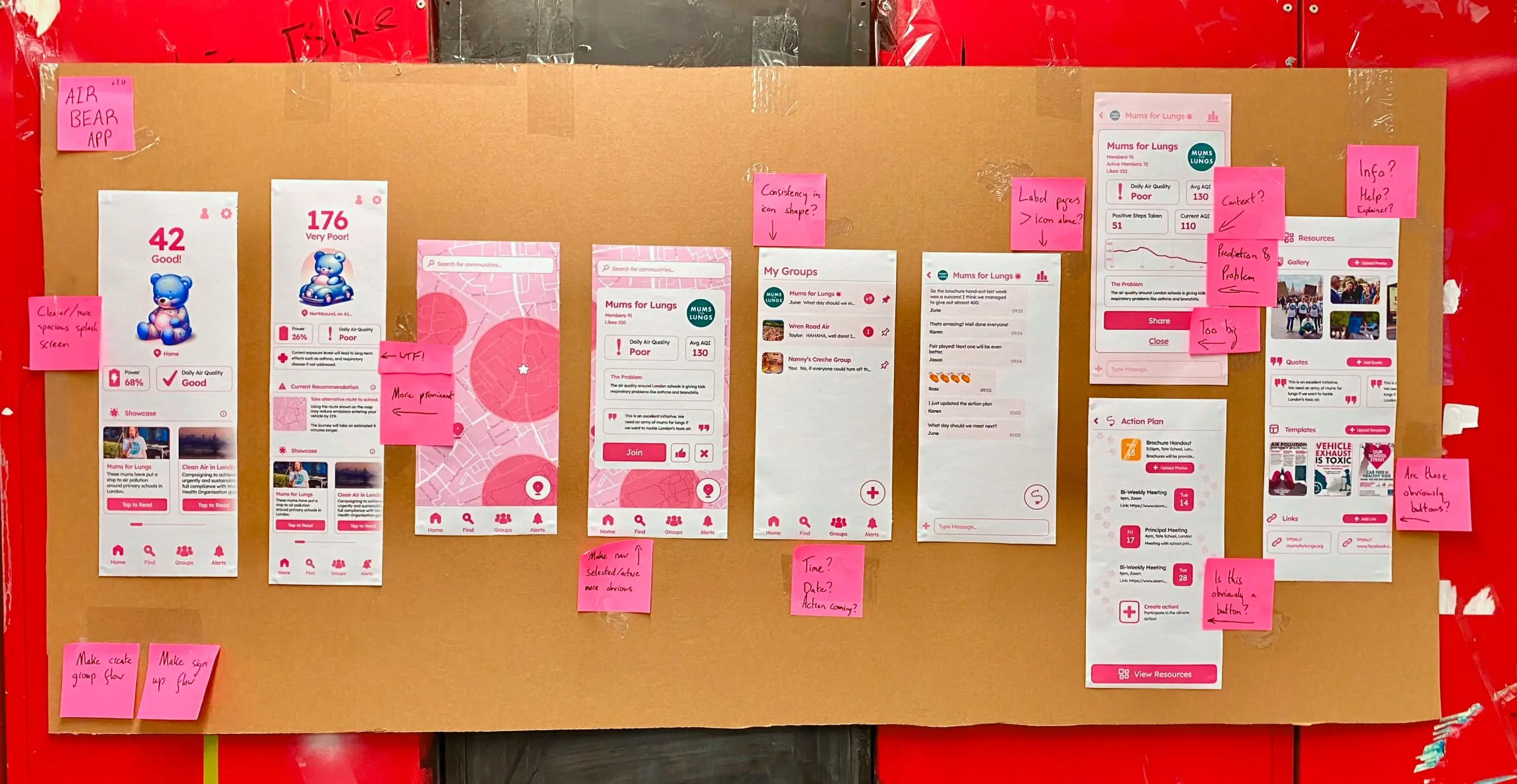 Feedback Sessions
Feedback Sessions
SWOT Analysis Crazy-Eights 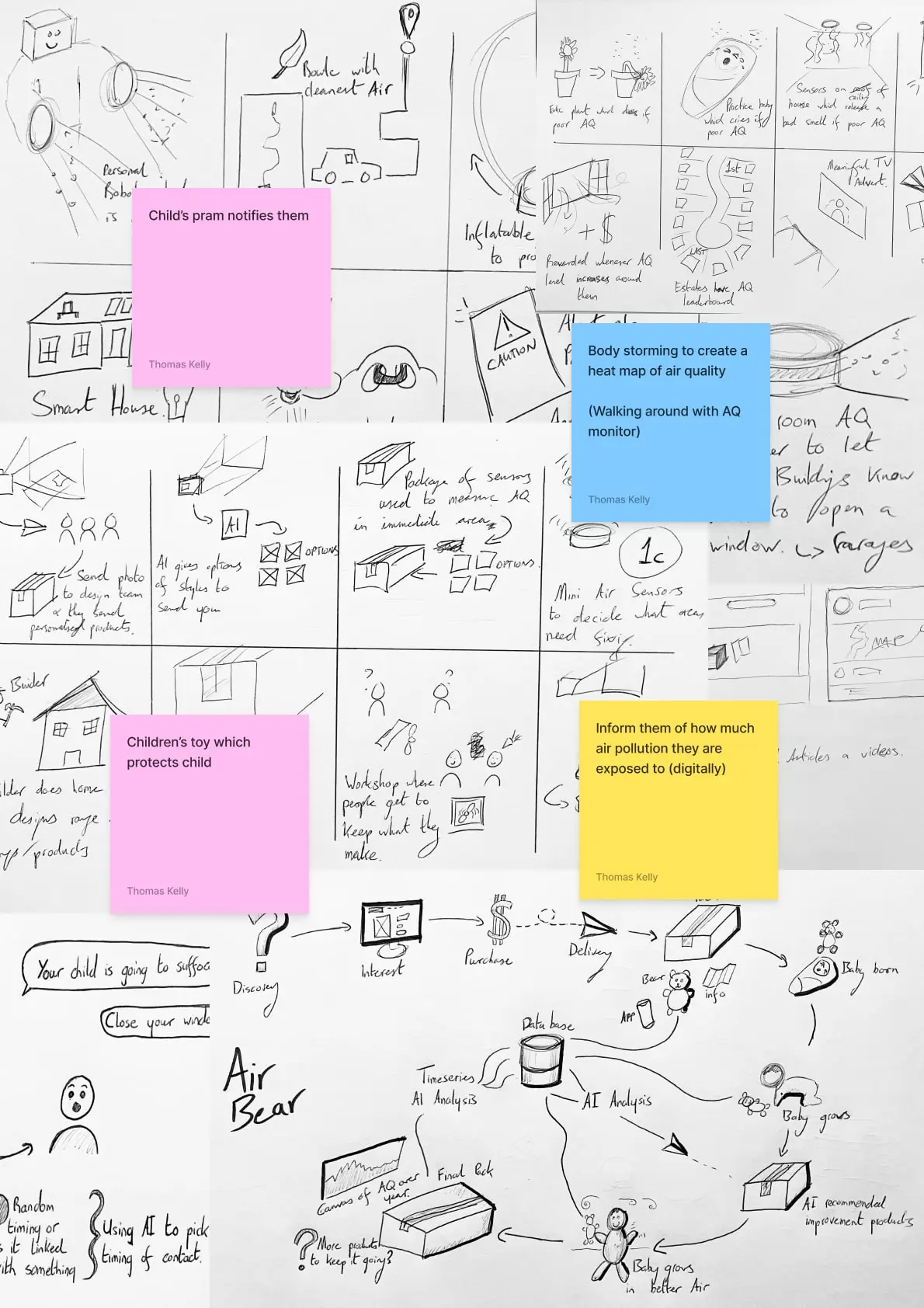 Lo-Fi
Lo-Fi
Hi-Fi Cultural Probes Body-Storming
User Flows  Usability Studies
Presentations
Usability Studies
Presentations 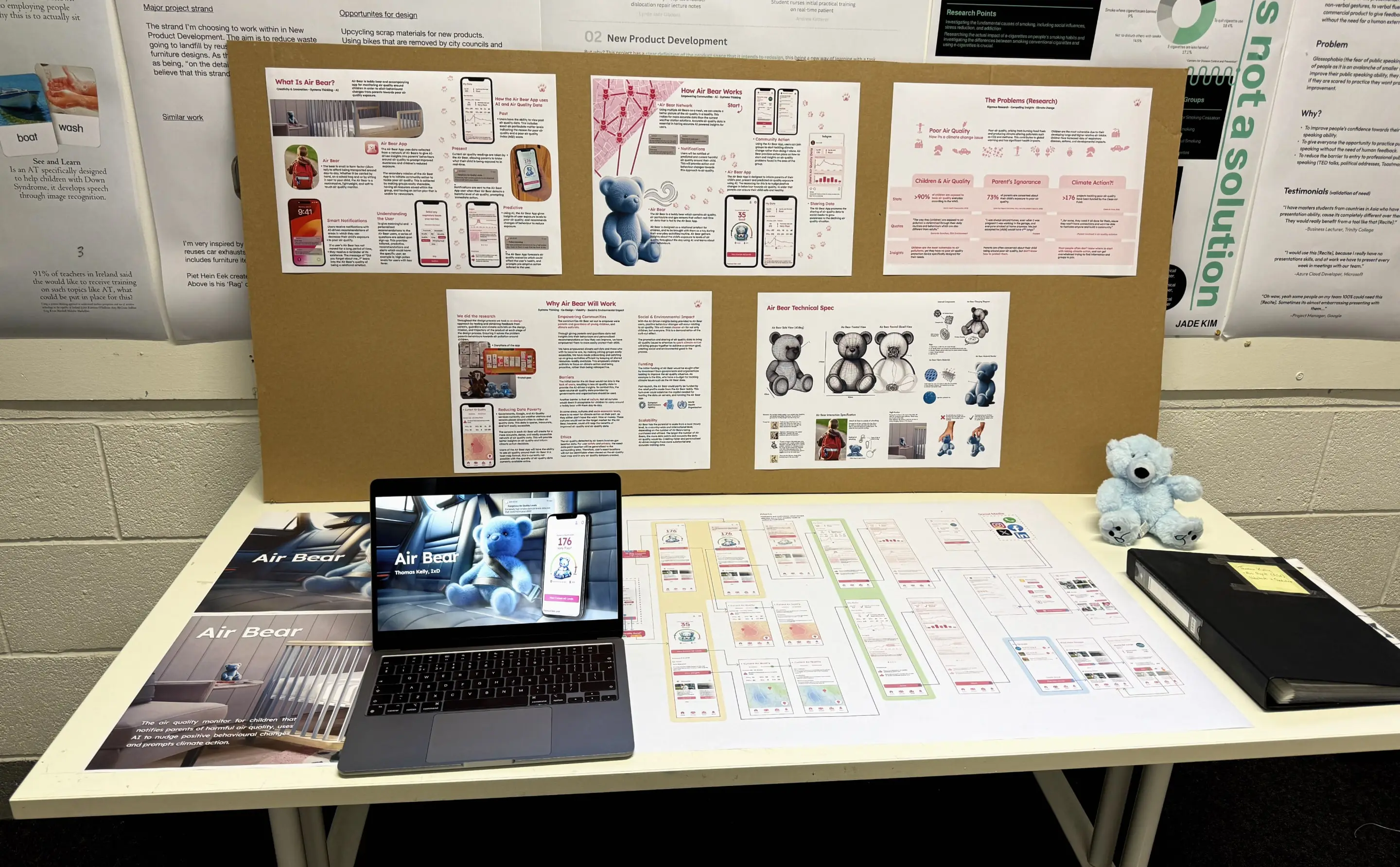

Prototyping
3 physical teddy bear prototypes were created for testing to evaluate the functionality of the electronics (air quality sensors), and to establish how children would react and interact with the teddy bears as Air Bear’s intent was to fit into children’s daily routine seamlessly.
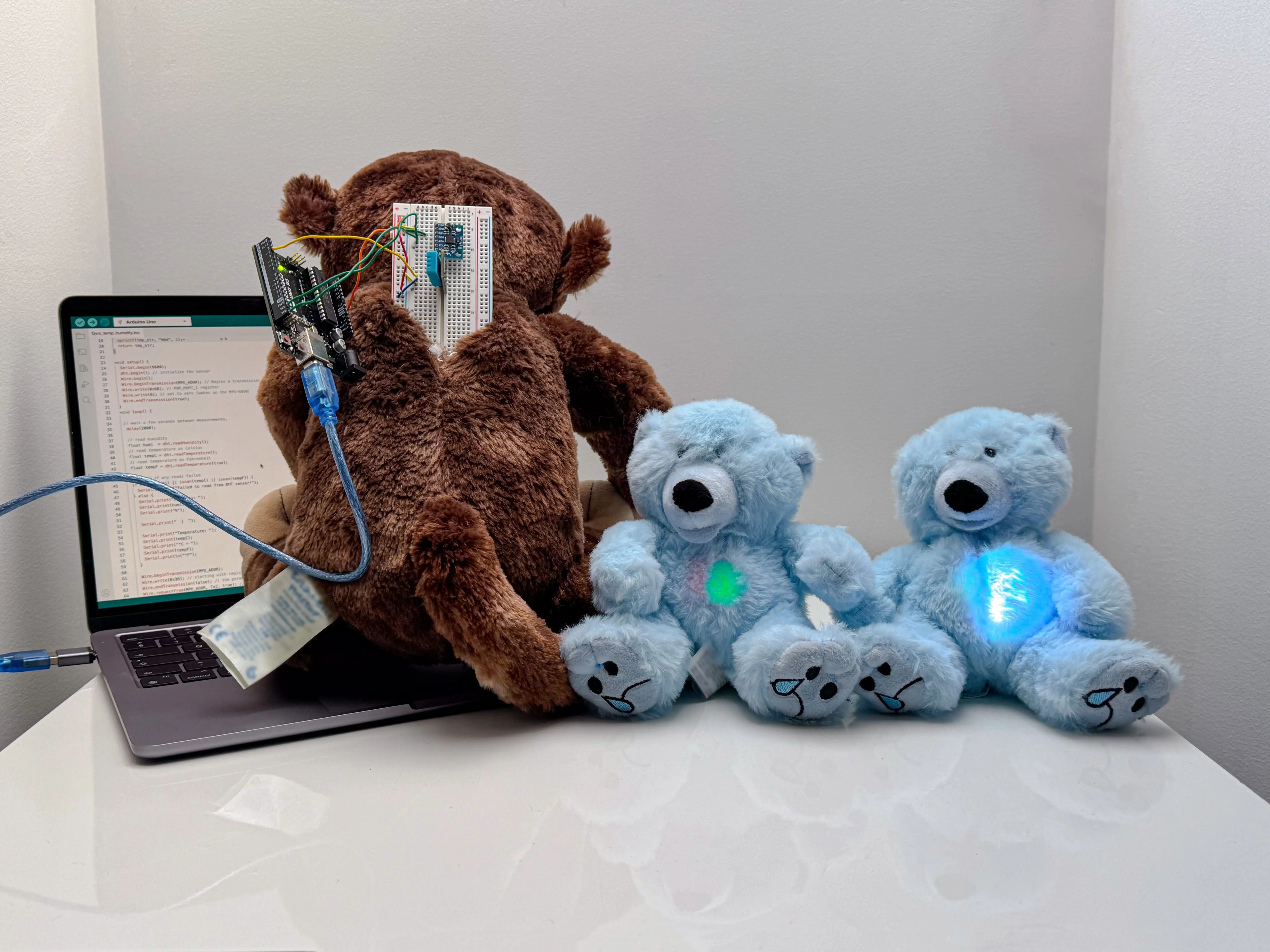
Evaluation
Observations from cultural probes established that children had no issue with the teddy bears being
part of their routines, validating the idea.
Parent’s expressed the opinion that it would not grab their child’s attention and would possibly not
be played with. This was a non-issue as there would be less interference with the internal
electronics and therefore less outlying air quality data.
The Air Bear app was observably usable, and parents had no issue understanding the navigation through
the app.
Feedback on a visual redesign was received. Given testing was conducted with a first-iteration
high-fidelity prototype, this was foreseeable.

